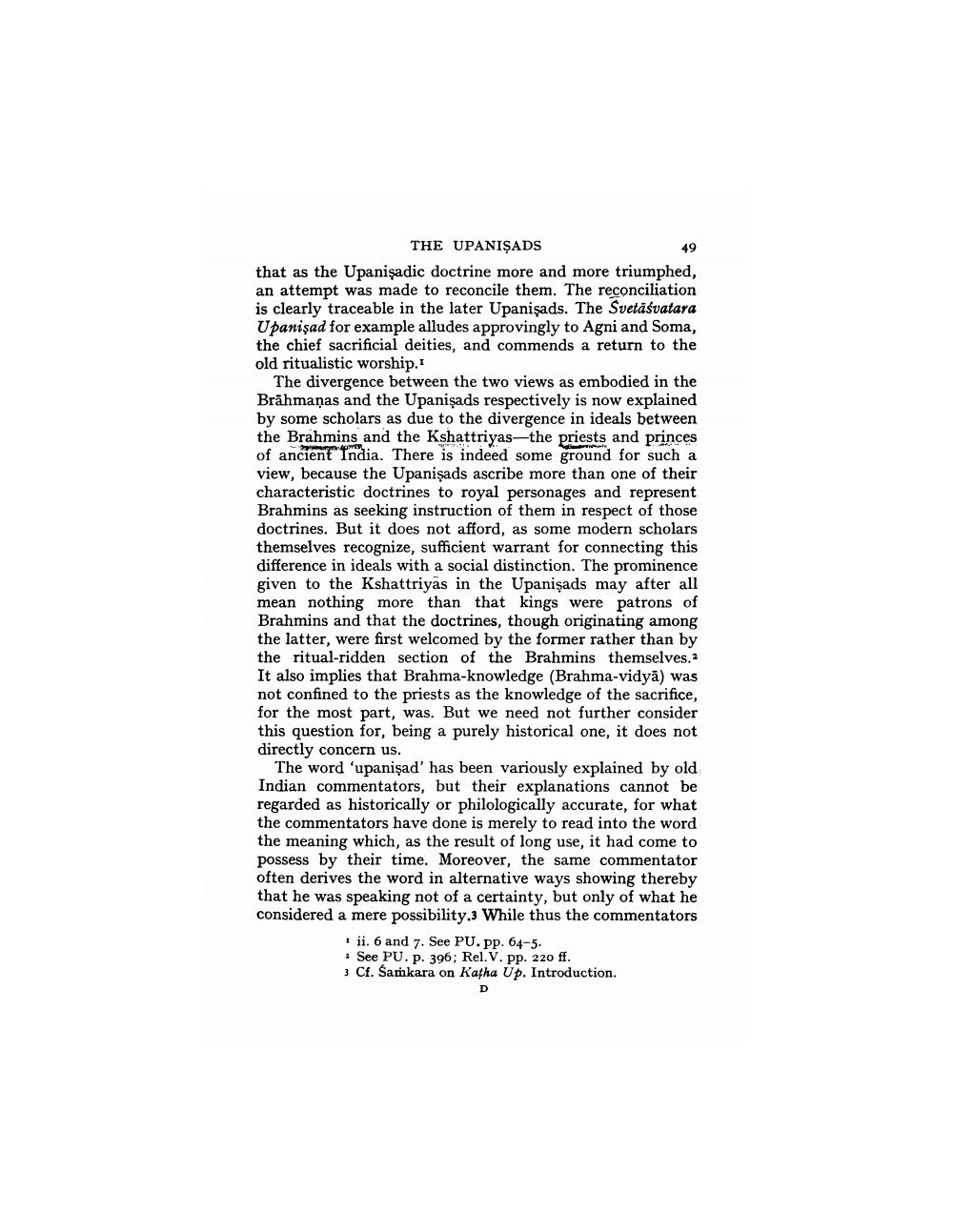________________
THE UPANIŞADS
49 that as the Upanişadic doctrine more and more triumphed, an attempt was made to reconcile them. The reconciliation is clearly traceable in the later Upanişads. The Svetäśvatara Upanişad for example alludes approvingly to Agni and Soma, the chief sacrificial deities, and commends a return to the old ritualistic worship.
The divergence between the two views as embodied in the Brāhmaṇas and the Upanişads respectively is now explained by some scholars as due to the divergence in ideals between the Brahmins and the Kshattriyas—the priests and princes of ancient India. There is indeed some ground for such a view, because the Upanişads ascribe more than one of their characteristic doctrines to royal personages and represent Brahmins as seeking instruction of them in respect of those doctrines. But it does not afford, as some modern scholars themselves recognize, sufficient warrant for connecting this difference in ideals with a social distinction. The prominence given to the Kshattriyas in the Upanişads may after all mean nothing more than that kings were patrons of Brahmins and that the doctrines, though originating among the latter, were first welcomed by the former rather than by the ritual-ridden section of the Brahmins themselves. It also implies that Brahma-knowledge (Brahma-vidyā) was not confined to the priests as the knowledge of the sacrifice, for the most part, was. But we need not further consider this question for, being a purely historical one, it does not directly concern us.
The word 'upanişad' has been variously explained by old Indian commentators, but their explanations cannot be regarded as historically or philologically accurate, for what the commentators have done is merely to read into the word the meaning which, as the result of long use, it had come to possess by their time. Moreover, the same commentator often derives the word in alternative ways showing thereby that he was speaking not of a certainty, but only of what he considered a mere possibility.3 While thus the commentators
1 ii. 6 and 7. See PU. pp. 64-5. • See PU. P. 396; Rel. V. pp. 220 ff. 3 Cf. Samkara on Katha Up. Introduction.




